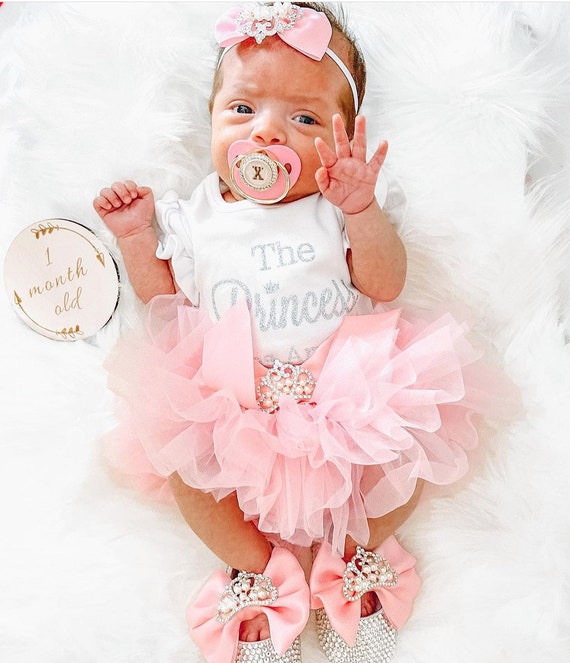
Baby Outfits: A Comprehensive Guide to Dressing Your Little One
Introduction
Dressing a baby can be a daunting task, especially for first-time parents. With so many different styles, sizes, and materials to choose from, it can be difficult to know where to start. This comprehensive guide will provide you with everything you need to know about baby outfits, from choosing the right size to layering for different weather conditions.
Choosing the Right Size
The first step in dressing your baby is choosing the right size. Baby clothes are typically sized by weight and height. You can find the weight and height of your baby on their birth certificate or by measuring them yourself. Once you know your baby’s weight and height, you can use a size chart to find the corresponding clothing size.
It is important to note that baby clothes can vary in size from brand to brand. Some brands run small, while others run large. If you are unsure about what size to choose, it is always better to err on the side of caution and choose a larger size.
Types of Baby Outfits
There are many different types of baby outfits to choose from, including:
- Onesies: Onesies are one-piece outfits that cover the baby’s body from the neck to the ankles. They are typically made of cotton or a cotton blend and are very comfortable for babies to wear.
- Bodysuits: Bodysuits are similar to onesies, but they have snaps at the crotch for easy diaper changes.
- Shirts and pants: Shirts and pants are two-piece outfits that can be mixed and matched to create different looks. Shirts are typically made of cotton or a cotton blend, while pants can be made of a variety of materials, including cotton, denim, and corduroy.
- Dresses: Dresses are one-piece outfits that are typically worn by girls. They can be made of a variety of materials, including cotton, lace, and silk.
- Rompers: Rompers are one-piece outfits that are typically worn by boys. They are similar to overalls, but they have shorter legs.
Materials
Baby clothes are made from a variety of materials, including:
- Cotton: Cotton is a natural fiber that is soft, breathable, and absorbent. It is a good choice for baby clothes because it is gentle on the baby’s skin and helps to keep them cool and comfortable.
- Cotton blend: Cotton blends are made from a combination of cotton and other fibers, such as polyester or spandex. Cotton blends are often more durable than 100% cotton and are less likely to shrink or wrinkle.
- Polyester: Polyester is a synthetic fiber that is strong, durable, and wrinkle-resistant. It is often used in baby clothes because it is easy to care for and can withstand repeated washings.
- Spandex: Spandex is a synthetic fiber that is very stretchy. It is often used in baby clothes to provide a snug fit.
- Silk: Silk is a natural fiber that is soft, luxurious, and breathable. It is a good choice for special occasion baby clothes.
Layering for Different Weather Conditions
It is important to dress your baby in layers so that you can adjust their clothing as needed to keep them comfortable. For example, you might want to dress your baby in a onesie and a pair of pants on a warm day. If the weather gets cooler, you can add a sweater or a jacket.
Here are some tips for layering baby clothes:
- Start with a base layer of a onesie or bodysuit.
- Add a middle layer of a shirt or pants.
- Add an outer layer of a sweater, jacket, or coat.
- If the weather is very cold, you can add a hat, gloves, and socks.
Accessories
There are a variety of accessories that you can add to your baby’s outfit, including:
- Hats: Hats help to keep your baby’s head warm and protected from the sun.
- Gloves: Gloves help to keep your baby’s hands warm.
- Socks: Socks help to keep your baby’s feet warm.
- Bibs: Bibs help to keep your baby’s clothes clean.
- Blankets: Blankets help to keep your baby warm and comfortable.
Safety
When choosing baby clothes, it is important to keep safety in mind. Here are some safety tips:
- Avoid clothes with drawstrings or cords, as these can be a strangulation hazard.
- Choose clothes that are made from flame-resistant materials.
- Make sure that all of your baby’s clothes fit snugly, but not too tightly.
- Wash all of your baby’s clothes before wearing them for the first time.
Conclusion
Dressing your baby can be a fun and rewarding experience. By following the tips in this guide, you can choose the right size, type, and material of clothing for your baby and keep them comfortable and safe.
